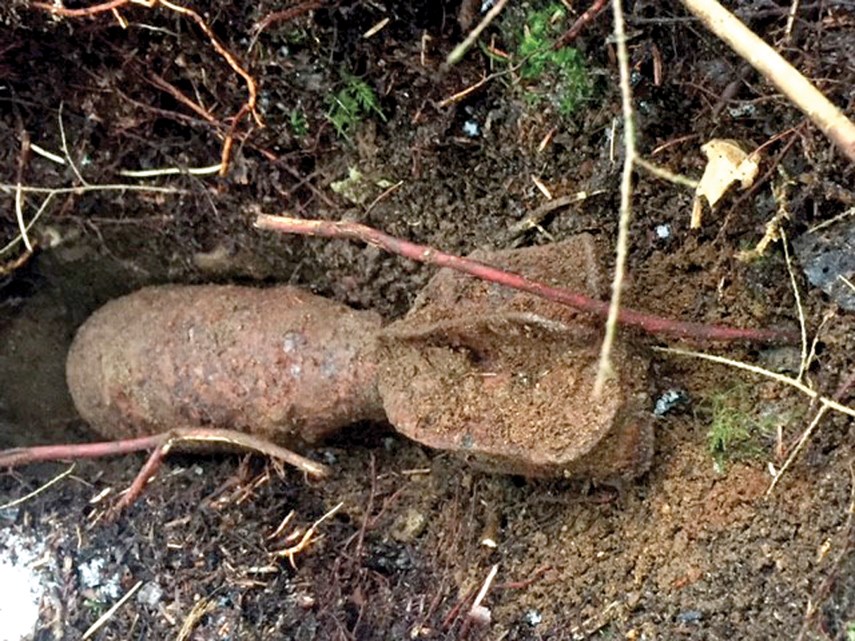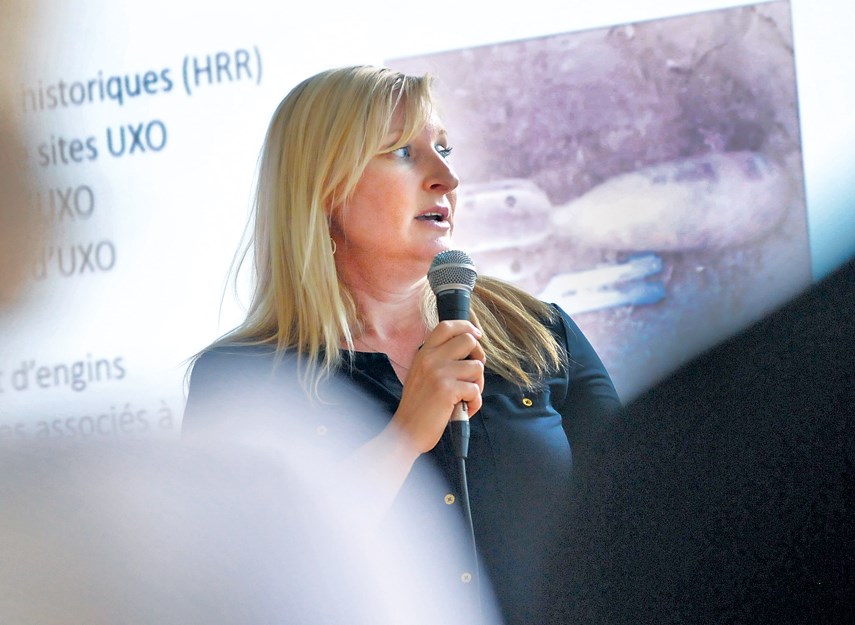Department of National Defence contractors are done hunting for undetonated bombs on the former Blair Rifle Range lands – but that doesn't mean there aren't more mortar shells under the surface.
That was the message from federal officials at the final community update Wednesday on their months-long search of the trails that turned up five mortar shells.
“The results of the risk assessment and the survey basically confirm again that the trails and open areas remain safe for use. But we do encourage people to remain on the marked trails and refrain from digging or making campfires in the area,” said Debbie Nicholls, senior project manager with the Department of National Defence. “It's important to note that even though we have done these surveys and we have removed items, there is still a potential for UXO at the site.”
The Blair Range lands off Mount Seymour Parkway have been on the National Defence’s list of “legacy” sites to check under the unexploded explosive ordnance program, having been a military training site from the 1930s to the 1960s. The land is now co-owned by the Canada Mortgage and Housing Corp. and the province and is used mainly by hikers, dog walkers and mountain bikers.
The search by explosives contractors armed with metal detectors focused on all the trails and clearings, plus a half-metre buffer on either side.
Other than heaps of garbage left behind by visitors to the lands since the military left, contractors also found a number of two-inch shells, which were used to produce smoke and flashes of light to simulate battlefield conditions, “six-pounder” dummy rounds made of solid metal, and components of exploded M36 grenades and mortar shells – all told about 200 kilograms of military remnants.

All of the mortar shells were found deep under the soil within the boundaries of the former range on the southern 100 acres of the massive site, although the exact locations aren't being disclosed.
“We find that can be a safety issue because there are some people who pretend to be bomb hunters and find things on their own,” Nicholls said.
After each of the shells was found, explosives experts from Canadian Forces Base Esquimalt came over to destroy them in controlled detonations.
National Defence has since posted new signs around the property warning visitors it is a former military site and reminding them of what to do if they happen by anything that might be considered UXO: Don't touch it. Turn around and leave the area and call 911.
There is a very low chance of any remaining bombs going off on their own but if they are disturbed and still have working components, it’s another matter. In the worst-case scenario, a three-inch mortar has a “lethality radius” of 10 metres and a danger radius of 450 metres.
According to CMHC, there are “no plans in the foreseeable future” for the land to be used for anything but recreation. And the current agreement with the North Shore Mountain Bike Association to maintain the trails does not allow construction of any new trails. If either of those things should change though, National Defence would have to conduct a new risk assessment.
The NSMBA is welcoming the conclusion of the UXO search, although members are disappointed the risk remains too high to build any new trails.
“Safety is a top priority for the NSMBA and we are glad to know that the risk to trail users within the former Blair Range is low,” said Penny Deck, director of advocacy for the association.
But, Deck added, the warnings against digging may pose challenges for the volunteer group that is now charged with taking care of the trails.
“This hinders our ability to maintain the trails within this boundary, including Stick & Stones, Cardiac Bypass, and the section of Bridle Path between the east and west junctions with Cardiac Bypass. All trails require ongoing maintenance to ensure safety for trail users, to help minimize erosion from water and users, to repair the trail surface, and to protect the environment,” she said. “The NSMBA encourages everyone to respect the signs installed by the DND and invites those who are keen to work on trails to reach out to us.”
Local historian Donna Sacuta said she may have to write an addendum to the historical research on the lands that she published in 2015. The UXO hunt confirms what was at the time of publication an open question as to whether the land had been used for explosives training. But concerns remain, Sacuta added.
“You’ve got to give them credit that they have done some work and done some investigation but I think more can be done in terms of expanding the area that’s been searched,” she said. “It seems that a lot of this is being put back on the public to be aware of what happens in there. If they see new trails being built, they better tell someone. If they see kids in there digging, then it’s going to be up to the community to report it. So be vigilant.”



